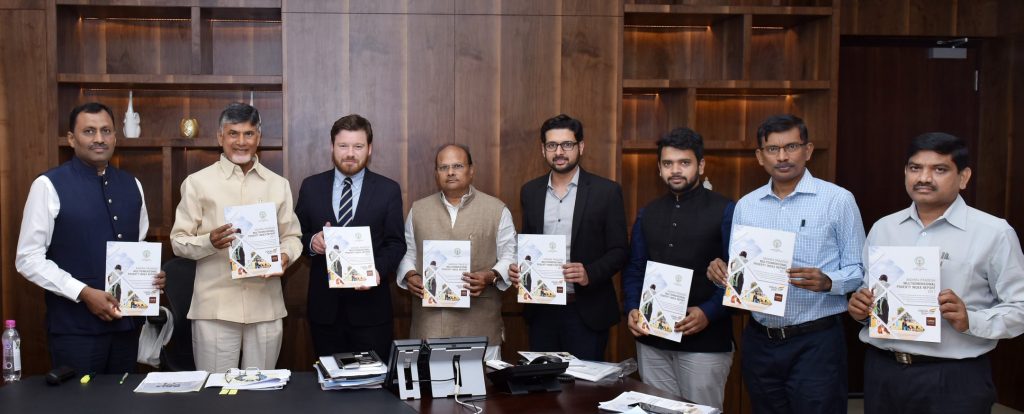
Search
Posts con la etiqueta ‘India’
A Day in the Life – Amudha
A pesar de todo el trabajo, no pueden costear un cilindro de gas para cocinar. La familia de Amudha no es dueña de una casa. Viven en una choza junto a un estanque seco en un sitio baldío propiedad del gobierno local. Debido a la falta de servicios higiénicos, se ven obligados a defecar al aire libre junto al estanque. Obtienen su electricidad gratis a través de una conexión con su vecino. Los escasos salarios que ganan no son suficientes para pagar el alquiler y mantener a una familia de cinco. Viven con el temor de ser expulsados de su alojamiento por no pagar el alquiler. Su familia necesita desesperadamente una buena casa para vivir.
 El día de Amudha comienza a las 6 a.m., ayuda a su madre en casa y luego se prepara para ir a la escuela. Ella camina a la escuela. La bicicleta que recibió del gobierno necesita reparación, pero no hay dinero para esto. Después de la escuela, ella asiste a clases de recuperación hasta las 9 p.m. Luego vuelve a casa y cena. Más tarde, ayuda a su madre a lavar los platos y se va a dormir a las 10 p.m. El sueño de Amudha es convertirse en médico. Su madre perdió dos bebés antes de que naciera Amudha, ya que no tenía acceso a ningún centro médico y dio a luz en casa. Amudha quiere ayudar a muchas mujeres rurales como su madre y trabaja duro para lograr este objetivo.
El día de Amudha comienza a las 6 a.m., ayuda a su madre en casa y luego se prepara para ir a la escuela. Ella camina a la escuela. La bicicleta que recibió del gobierno necesita reparación, pero no hay dinero para esto. Después de la escuela, ella asiste a clases de recuperación hasta las 9 p.m. Luego vuelve a casa y cena. Más tarde, ayuda a su madre a lavar los platos y se va a dormir a las 10 p.m. El sueño de Amudha es convertirse en médico. Su madre perdió dos bebés antes de que naciera Amudha, ya que no tenía acceso a ningún centro médico y dio a luz en casa. Amudha quiere ayudar a muchas mujeres rurales como su madre y trabaja duro para lograr este objetivo.
Amudha es multidimensionalmente pobre. Ella vive con carencias en seis de los 10 indicadores del IPM global 2018:
Fotos: Lady Doak College
*Su nombre ha sido cambiado
Indian state of Andhra Pradesh releases its first Multidimensional Poverty Index Report
Across countries, India is home to the largest number of MPI poor people in the world. According to the most recent data (2011/12), 41% of people are poor and the MPI value stands at 0.191. AP’s MPI in contrast is 0.0825. The MPI ranges from 0 to 1; 0 being the best and 1 being the worst, and reflects the percentage of possible deprivations that are actually being experienced by poor persons in Andhra Pradesh today. AP’s MPI value falls between that of Sao Tome & Principe and Bolivia.
Within the Andhra Pradesh state, East Godavari has the lowest MPI among the districts, with a value of 0.047, while Vizianagaram has the highest, with a value of 0.127.
The multidimensional poverty headcount ratio of the State, which gives the proportion of people living in multidimensional poverty, fell from 41.6% in 2005-06 to 21% in 2016-17. The rural headcount ratio stands at 22% while for urban areas it is 19%.
By conducting this study, Andhra Pradesh has become the first state in the country to perform a household survey exclusively to estimate MPI at state and district levels, disaggregated by social categories and urban-rural areas. The end-to-end process, including sampling, data processing & analysis, and estimation of headcount and Index values, was conducted with OPHI’s technical support.
Christian Oldiges, Research Officer from OPHI, was present at the launch. “OPHI has been in communication with the very motivated team in Andhra Pradesh since the start of this project. We are impressed by their innovation and dedication.” said Mr. Oldiges. “Our hope is that the MPI will be used to energise state-level policies and accelerate AP’s progress in meeting many SDGs, and thus reducing poverty in all its forms and dimensions.”
The MPI development project was led by Alen John (Senior Associate), Bhaskar Somayaji (Consultant) and Soumya Guha (Associate) under the supervision and guidance of Prathima Reddy, Director at the Vision Management Unit, AP State Development Planning Society, Planning Department.

Chief Minister N. Chandrababu Naidu (second from left to right) releasing Andhra Pradesh Multidimensional Poverty Index Report 2017, at the Assembly on Tuesday.
Andhra Pradesh MPI
Key Findings
More info here.
















Recent Comments